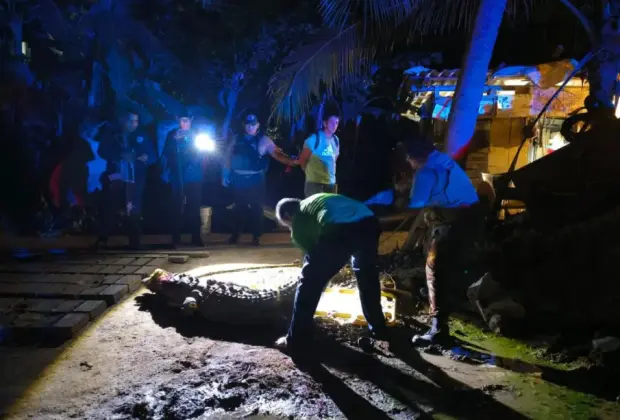Two crocodiles were recently found dead in Puerto Vallarta, sparking concern among experts and raising alarms over sightings in areas where the species is rarely seen, such as Mismaloya and Las Ánimas.
Dr. Helios Hernández Hurtado, crocodile researcher and professor at the University Center of the Coast (CUCosta), is urging the public to protect the local crocodile population and respect their habitat. He emphasized that these animals are not threats, but vital indicators of healthy ecosystems in Banderas Bay.
According to CUCosta data, the estimated crocodile population in the area—from Nuevo Vallarta and the Ameca River to El Salado Estuary and Marina Vallarta—is under 300. Dr. Hernández warned that despite public perception, this is a small and fragmented population.
“It’s very unfortunate,” he said. “These deaths matter because we’re working with a limited number of animals. People think there are too many, but that’s simply not true.”
For over 30 years, CUCosta and the Cipactli Reptilarium have studied, monitored, and worked to conserve the river crocodile (Crocodylus acutus), producing scientific data to inform proper management.
Dr. Hernández explained that crocodile movement is natural, especially during the rainy season when they migrate between bodies of water like El Salado, Boca de Tomates, and the El Quelele estuary—covering less than 600 hectares. Occasionally, they may appear along the coast, including the Marietas and Punta Mita.
He noted that conflicts typically arise when humans invade crocodile habitats or ignore basic precautions. “If we bring a dog off-leash into these areas, we’re putting it at risk. Crocodiles aren’t out to harm us—they’re just living in their ecosystem.”
Hernández called for coexistence and education, reminding the public that cities like Cancún, Miami, and regions in Australia and South Africa have learned to live with crocodiles.
“These animals have existed here for centuries. With respect and awareness, Puerto Vallarta can do the same.”

